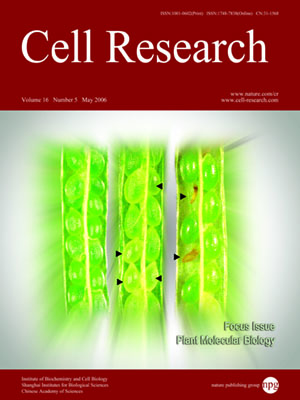
Volume 16, No 5, May 2006
ISSN: 1001-0602
EISSN: 1748-7838 2018
impact factor 17.848*
(Clarivate Analytics, 2019)
Volume 16 Issue 5, May 2006: 519-527
ORIGINAL ARTICLES
Development of rabbit monoclonal and polyclonal antibodies for detection of site-specific histone modifications and their application in analyzing overall modification levels
Lan Guo, Benliang Yin, Junli Zhou, Xueyong Li, Xing Wang Deng
sup>1National Institute of Biological Science, Zhongguancun Life Science Park, Beijing 102206, China; 2Peking-Yale Joint Center of
Plant Molecular Genetics and Agrobiotechnology, College of Life Sciences, Peking University, Beijing 100871, China; 3Department
of Molecular, Cellular, and Developmental Biology, Yale University, New Haven, Connecticut 06520-8104, USA
Correspondence: Xing Wang Deng(xingwang.deng@yale.edu)
In addition to DNA sequence information, site-specific histone modifications are another important determinant of gene expression in a eukaryotic organism. We selected four modification sites in common histones that are known to significantly impact chromatin function and generated monoclonal or polyclonal antibodies that recognize each of those site-specific modifications. We used these antibodies to demonstrate that the site-specific histone modification levels remain relatively constant in different organs of the same organism. We also compared the levels of selected histone modifications among several representative organisms and found that site-specific modifications are highly variable among different organisms, providing new insight into the evolutionary divergence of specific histone modifications.
Cell Research (2006) 16:519-527. doi:10.1038/sj.cr.7310063; published online 15 May 2006
FULL TEXT | PDF
Browse 1934


